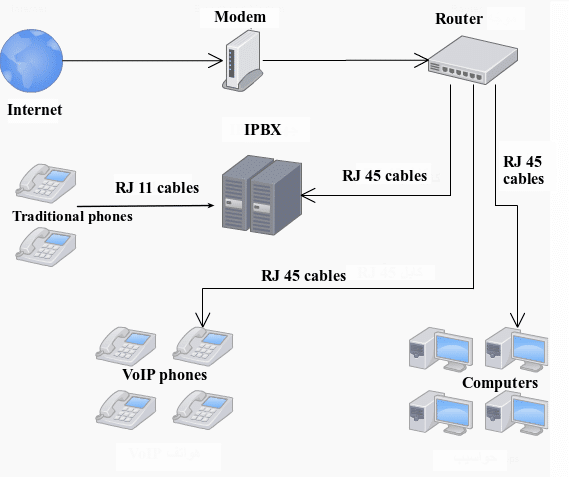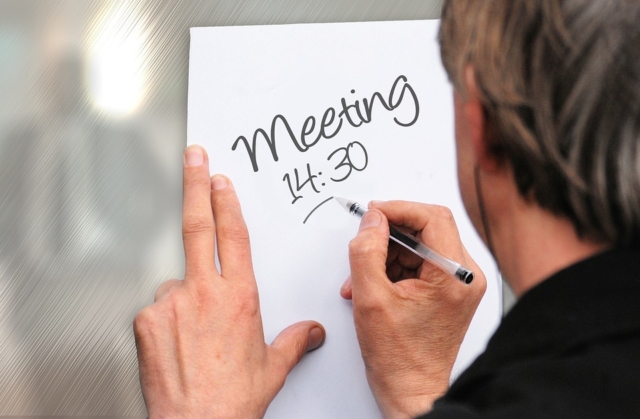Communication doesn’t come naturally to everyone. But it’s an essential ingredient to success in the workplace. With the fast pace at which the world has changed, communication has become an essential skill as organisations have embraced the remote work model in one form or another.
This shift has led to a rise in the use of virtual conference calls to achieve organisational goals. Whether you’re hosting an internal conference call or an external one, there’s usually no manual to help direct you to conduct a successful one.
That’s why I decided to create this guide.
What is a Conference Call?
A conference call is an online meeting that allows for more than one individual to listen in on and participate in the conversation.

Some conference calls are conducted when groups of people share the same interest (for example fans of a book club can get together online to discuss the latest book), while others are business-related.
These virtual meetings are especially important for companies with multiple offices or who need to communicate across different areas of the country.
It’s not easy to have everyone on the same page. But when you plan a conference call well and stick to some standard rules, it can go very smoothly.
Let’s quickly dive into conference call best practices that will help ensure that all yours do just that – run smoothly. These are also effective when hosting other types of virtual meetings like webinars.
Conference Call Etiquette: 10 Essential Dos
With remote working seemingly here to stay, there’s no way organisations can function without conference calls. However, for your conference calls to be effective, you must follow some best practices. Here are seven conference call etiquette essentials to apply:
1. Sort Out All Technical Logistics Way Ahead of Time
There’s one element of conference calls you can never escape – the heavy dependence on technology. Excellent examples of said technology include a VoIP server and a business communications platform like RingCentral, among others.

However, good as it may be, technology doesn’t always work the way it’s supposed to. That’s why you must do your due diligence to ensure that all technical logistics are sorted ahead of time. Make sure your phone system is functioning properly before you dial into your conference call. So, make sure to:
- Test your equipment before the conference call starts
- Ensure all parties involved are familiar with the equipment you’re using
Especially if the conference call includes external parties, failing to manage your technical logistics during a conference call can cost you business.
2. Have a Clear Agenda
Going into a conference call that doesn’t have an agenda is not only frustrating but it’s also unproductive. Your employees are busy and don’t take kindly to any activity that detracts from their main mission.
That’s why you must always have an agenda for your conference calls.
An agenda will help ensure that your meeting has a clear structure and goal. As a result, everyone will know what to expect from the meeting. They’ll also know what’s expected of them and they’ll be prepared to participate from the onset.
Having a clear agenda is a great way of keeping the conference call from going off on a tangent. It will help keep the meeting focused, on track, and productive. Don’t worry, your agenda doesn’t have to be a detailed run-down of everything you intend to cover in the meeting. A brief outline will do.
3. Value a Participant’s Time

Another important aspect of conference call etiquette you must follow is respecting and valuing time. Let everyone know what time the conference call will start and what time you expect it to end. If you’re the host, make sure to start on time.
Just as in a face-to-face meeting, being late for a conference call is rude and unprofessional. Being on time is a sign of respect for the participants and organisation represented in the conference call. So, make sure you start your conference call on time and end it on time.
5. Introduce Yourself and All Participants
Introducing yourself and the participants of your conference call is good etiquette. Whether you work on the same team and are familiar with each other or not, introductions are crucial. They help everyone know who’s in the meeting and what capacity they are in. Introductions are a great way to break the ice, get people comfortable, as well as test their equipment. While this may seem like basic conference call etiquette, it must never be overlooked.
6. Give Participants Time for Questions and Feedback
A conference call should never be a one-way conversation. You must allow participants the opportunity to contribute in the form of feedback, comments, or questions. Depending on the nature and purpose of the call, this can be done in one of two ways:
- During the presentation
- At the end of the conference call
Giving participants the chance to contribute has several benefits like humanising the meeting. This is especially if the conference call is more of a monotonous presentation. Allowing comments and feedback breaks the monotony. When participants are afforded the opportunity to contribute, it also helps clarify topics that weren’t clearly understood.
7. Eliminate All Distractions
No matter your setting you must ensure there are no distractions. Encourage your participants to be in a distraction-free environment too. A few ways to eliminate distractions include:
Find a quiet place to attend the meeting from. If you’re in a place with unavoidable background noise, make sure to explain your situation to everyone. Failure to do so could result in you appearing rude. Other ways of eliminating distractions include:
- Use the mute button. Except for the one speaking, it’s good conference call etiquette to mute your mouthpiece. This is because background noises can negatively impact the quality of the conference call. Don’t forget to un-mute yourself when you want to speak.
- Turn off the call waiting function. This function is distracting due to the beeps or tones that indicate that other calls are coming in. Deactivate the call waiting function when in a conference call. Other callers can always leave a message or call you back later.
The fewer the distractions, the more smoothly the conference goes and the more you effectively use your time.
8. Project Your Voice Loudly and Clearly
Avoid speaking softly during a conference call. This can lead to people struggling to hear you – especially if the connection is poor. The best ways to ensure you project your voice clearly into the mouthpiece include:
- Slow down the rhythm of your speech
- Take pauses
- Speak loudly
If your voice is on the softer side, you must sit as close to the phone as you can. Doing so will ensure that your voice is projected into the mouthpiece as clearly as possible.
9. Eliminate Dead Air
Silence is unavoidable in a meeting. When it’s a conference call, it can be discomforting. That’s why one principle of conference call etiquette calls for the elimination of dead air or prolonged moments of silence.
If the line is quiet for too long, participants may assume that you’re having technical difficulties, unsure of your response, or being plain rude. Sometimes, however, you may be in a situation where a direct answer is forthcoming but not immediate. In such situations, let people know what actions you’re taking to get the answer.
Eliminate dead air by talking them through your process.
Narrating these steps is a great way of actively letting the participants know that you’re still there. It also helps keep them engaged despite the minor speed bump in the flow of the conference call.
10. Recap Your Goals and Achievements
Before signing off, make sure to recap your goals for the conference call and highlight your achievements. This is essential as it helps keep everyone on the same page at the end of the meeting. It also ensures that they takeaway the main achievements and know what to do with them and how to accommodate for the goals not reached. It’s also important to use transcription software to transcribe the recorded version of the meeting. This will ensure that everyone has a hard copy of what was discussed during the conference call.
Of course, conference call etiquette also requires that you also sign off with a formal goodbye. This will let everyone know that the meeting is officially over and that they can log off.
With these ten conference call best practices, you’re set to maximise the limited time you have with your participants. It will also ensure that everyone on your team enjoys these sessions and participates as fully as they can.
Conference Call Etiquette: 5 Things to Never Do
Conference call etiquette is all about common courtesies. It’s about being considerate of the other people on the call. Being polite and kind will make everyone feel more comfortable and respected.
It’s a simple concept, but it can get complicated in practice because there are so many ways you can mistakenly hurt someone else’s feelings or come off as an inconsiderate and unprofessional jerk.
1. Use Jargon, Slang, or Short-forms
A key principle of effective communication is understanding your audience and using the kind of language they prefer. In a conference call, you may all have similar interests but the level of knowledge and industry terms may be different. That’s why you must avoid using jargon, slang, or short forms of words as much as possible.
Sure, conciseness is essential in a conference call, but it must not come at the cost of clarity. While words like IMO (in my opinion) and BRB (be right back) have become common language, try to keep your communication as clear and professional as possible. This will ensure that everyone is on the right page.
2. Don’t Speak Over Participants
Avoid interrupting other call participants by not speaking over them. Even if you think they’re rambling, ask the speaker if he or she would like a moment to get something out before you come in with your own thoughts.
Talking over other people can be a bad habit to get into even in one-on-one conversations. But it is especially rude when you do this in the course of a conference call because sometimes you are interrupting another person’s thoughts or ideas. When you talk over participants, you can also appear somewhat rude and impatient even if that’s not your intention.
Another reason to avoid speaking over other participants is that it makes everyone else feel less important. As a result, other participants will hesitate to offer their input.
3. Never Multi-task, Even if Participants Can’t See You
Conference call etiquette requires that you avoid multi-tasking.

For one, it’s rude. Secondly, it can be distracting for other members of the conference call. Sure, they may not be able to see you. But in many cases, they can hear that you’re working on other things. This will send a signal to other participants that you don’t value the meeting. Especially if you’re the host, this will lead to everyone else trivialising the meeting as well.
4. Don’t Neglect the Meeting Agenda
Remember the agenda you set for the meeting?
It is the roadmap to what you want to achieve through your conference call. Try to stick to it as much as possible. Keep an eye out for any comments and topics that can lead to you going on a tangent. As the meeting host, this will require you to be particularly attentive to the flow of the conversations to keep all comments in line with your agenda.
If you don’t stick to the agenda for your conference call, not only will you run the risk of going off-topic, but you’ll also end up losing the attention of your participants.
5. Don’t Include Specialised Conversations
Sometimes you may find yourself in a conference call with 12 people and yet find yourself and a couple of participants dominating the discussion with a specialised topic. In such cases, you should arrange for another call to iron out that particular issue. Prolonging such a discussion wastes the other participants time and results in them being drained and disengaged.
If the specialised topic has a bearing on the goals of the conference call, come prepared with a brief blurb on the matter. Once you’ve delivered the summary, parlay the issue back to a later time with the relevant participants.
Conference Call Etiquette – Key to Productive Virtual Meetings
Conference call etiquette is essential to productive meetings. Following these best practices will also ensure everyone feels like a valuable member of the team, resulting in you getting the most out of each participant.
So, as you prepare for your next conference call, make sure to keep these 15 dos and don’ts in mind. Here’s to successful conference calls.
Originally published Sep 14, 2021, updated Jan 13, 2023

Hi
Great Pointers. Since I’m working from home and have to attend many Conference Calls, I badly need this information. I will definitely implement mentioned tips. Looking forward to knowing more.
Thanks for sharing.